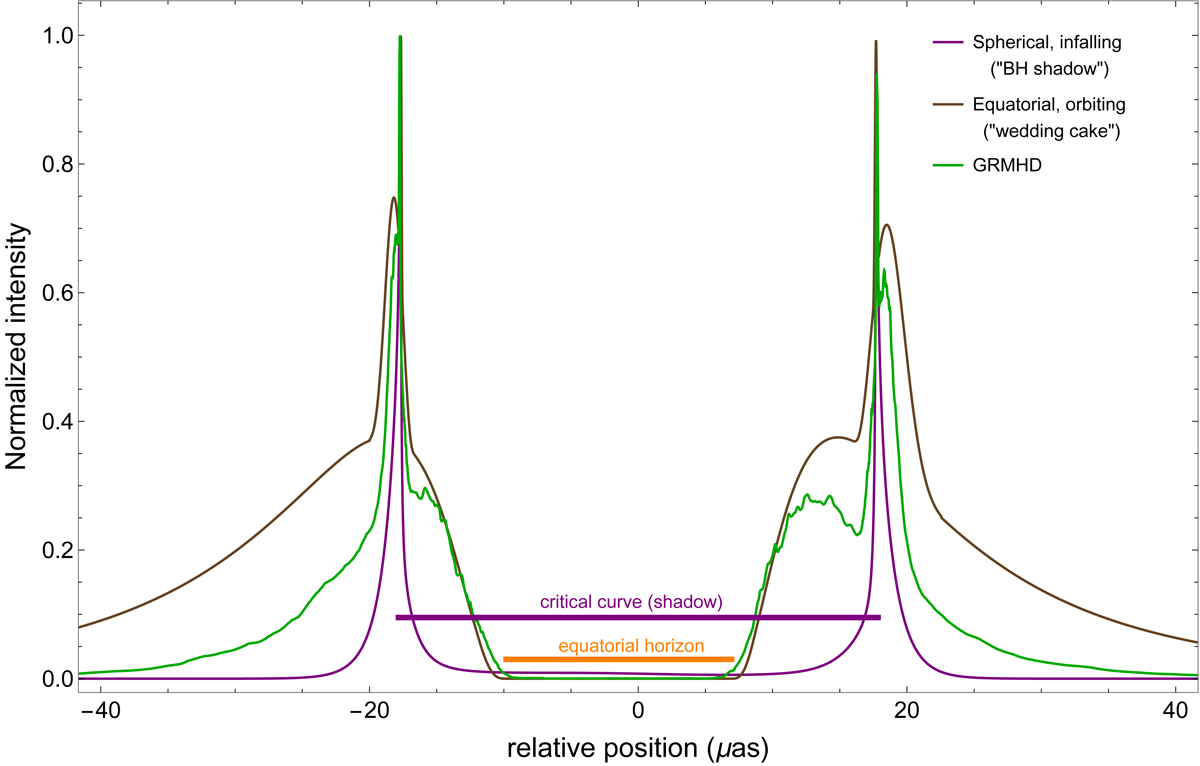Fig. 1.

Download original image
Intensity cuts of equatorial and spherical models. Under the assumption of optically thin emitting matter concentrated very near the horizon, the range of reasonable appearances for models of accretion onto a Kerr black hole can be bracketed by two extreme toy models: equatorial, orbiting matter (brown), which produces a “wedding cake” structure (Gralla et al. 2019; Johnson et al. 2020), and spherical, infalling matter (purple), which produces a “shadow” (Falcke et al. 2000). Here, we show a 230 GHz intensity cut parallel to the spin axis of M 87* (taken to be a rapidly spinning black hole with a = 0.94), including photons that orbit at most one full orbit around the black hole (up to n = 2 half-orbits), with each model normalized to its peak intensity. The brown and purple curves were ray traced from analytic models (see Sect. 3.4 for details), while the green curve is numerical data from Johnson et al. (2020) produced with the simulation pipeline described in Wong et al. (2022). The horizontal bars indicate the location of the Kerr critical curve and the apparent position of the equatorial event horizon.
Current usage metrics show cumulative count of Article Views (full-text article views including HTML views, PDF and ePub downloads, according to the available data) and Abstracts Views on Vision4Press platform.
Data correspond to usage on the plateform after 2015. The current usage metrics is available 48-96 hours after online publication and is updated daily on week days.
Initial download of the metrics may take a while.


